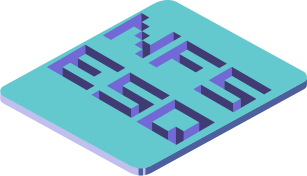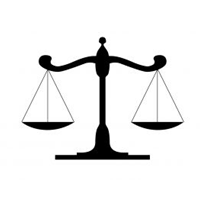Personal Injury Lawsuits
People often ask me: How do personal injury lawsuits work? In particular, people who have been involved in car accidents often want to know “How Much is my case worth” and “How long will my case take.”
While every case is different, there is a basic pattern that most personal injury lawsuits in California follow.
Step One: Retain a Lawyer
The first step is to find an attorney that practices personal injury law. This area of law is also called “tort” law. If your injury occurred at work, you may also need to speak to a lawyer that practices “worker’s compensation law.”
Personal injury law is a type of civil law, rather than criminal law. This means that no one is going to be arrested or sent to jail as a result of the lawsuit. The goal in a civil lawsuit is only to obtain a money judgment.
The best way to find a good personal injury lawyer is word-of-mouth. If you don’t know anyone that can recommend an attorney for you, you can research lawyers in your area online. The site www.avvo.com ranks attorneys, and can be a good starting point for your search. Most reputable personal injury lawyers will be happy to give you a free consultation.
Step Two: Pre-Lawsuit Activities
Once you find a lawyer that you are happy with, you and your lawyer can attempt to settle your case before filing a lawsuit. If you are injured, your primary concern should be to get better. While you heal, your lawyer will usually gather the information needed to evaluate and settle your case. This will usually include gathering your medical records, medical bills, and records documenting any time you may have missed from work.
Be aware – in California, there is a statute of limitation on personal injury lawsuits. This means that you must file your lawsuit (see step three below) within a certain amount of time, or your right to recover could be lost forever. The statute of limitation may be different depending on the type of case you have, so the best way to protect yourself is to speak to an attorney as soon as possible.
If you heal from your injury within a reasonable amount of time, you and your attorney may be able to reach a money settlement without ever having to file a lawsuit.
Step Three: Filing a Lawsuit
If you are unable to reach a settlement, your attorney will have to file a lawsuit. The party filing the lawsuit is called the “plaintiff” and the person being sued is called the “defendant.”
Your lawyer will start your lawsuit by preparing a legal document called a “Complaint” and filing it with the superior court in the appropriate county, along with a fee.
The “Complaint” names which defendants you are suing, and lists the reasons why you believe you are entitled to compensation.
If the defendant had automobile insurance, his insurance company will usually provide him with a lawyer to defend the lawsuit.
Step Four: Discovery
Once the lawsuit has officially began, the “discovery” process begins. This is where both parties get a chance to ask each other questions. There are usually written questions (called “interrogatories“). Each party also gets the chance to take a “deposition” or to “depose” the other parties to the lawsuit, or other witnesses.
During a “deposition” the lawyer who requested the deposition gets to meet the other party or witness in person, and ask them a series of questions. The person answering the questions must give an oath to tell the truth. Depositions are a very useful way for attorneys to discover the facts of a given case.
Hopefully, by the times both sides have completed the discovery process, there will be very few surprises left in the case.
Step Five: Alternative Dispute Resolution (ADR)
The parties are free to settle their case at any point, but if they have made it all the way through the discovery process without reaching a settlement, the court usually sends the case to Alternative Dispute Resolution or “ADR.”
ADR is simply a formal attempt to settle a case without going to trial. There are three main types: (1) Binding Arbitration; (2) Non-binding Arbitration; and (3) Mediation.
Aribtration
At an Arbitration, the plaintiff, the defendant, and their attorneys meet with a third party called the “arbitrator.” Both the plaintiff and defendant present their evidence, just like they would at trial, and the arbitrator makes his decision. The arbitrator will decide whether the defendant is at fault, and if so, how much money he owes to the plaintiff.
In a non-binding arbitration, either party is free to reject the arbitrator’s findings, and demand a trial. In a binding arbitration, whatever the arbitrator decides will become the final judgment.
Mediation
A mediation is slightly different than an arbitration. Once again, all the parties and their lawyers will meet with a third party (this time called the “mediator”). However, unlike an arbitrator, the mediator will not make a decision as to who is right or wrong, and he will not issue any awards. Rather, the mediator will attempt to work with both parties to resolve their issues, and try to find some common ground.
Step Five: Trial
If the parties still haven’t reached a settlement, the case can go to trial. At trial, both the plaintiff and the defendant will have an opportunity to testify and submit evidence to a jury (or in some rare cases, just to a judge). The jury will hear the evidence and then make a determination as to whether the defendant is at fault, and if so, how much he owes the plaintiff.
Of course, this is just a very broad overview of how personal injury lawsuits work in California. Each case is different, and each of the above steps has many details that I was not able to cover here.
If you have any questions, feel free to contact me.
Noah F. Schwinghamer, Esq. is an attorney in Sacramento California. None of the above should be considered legal advice.


